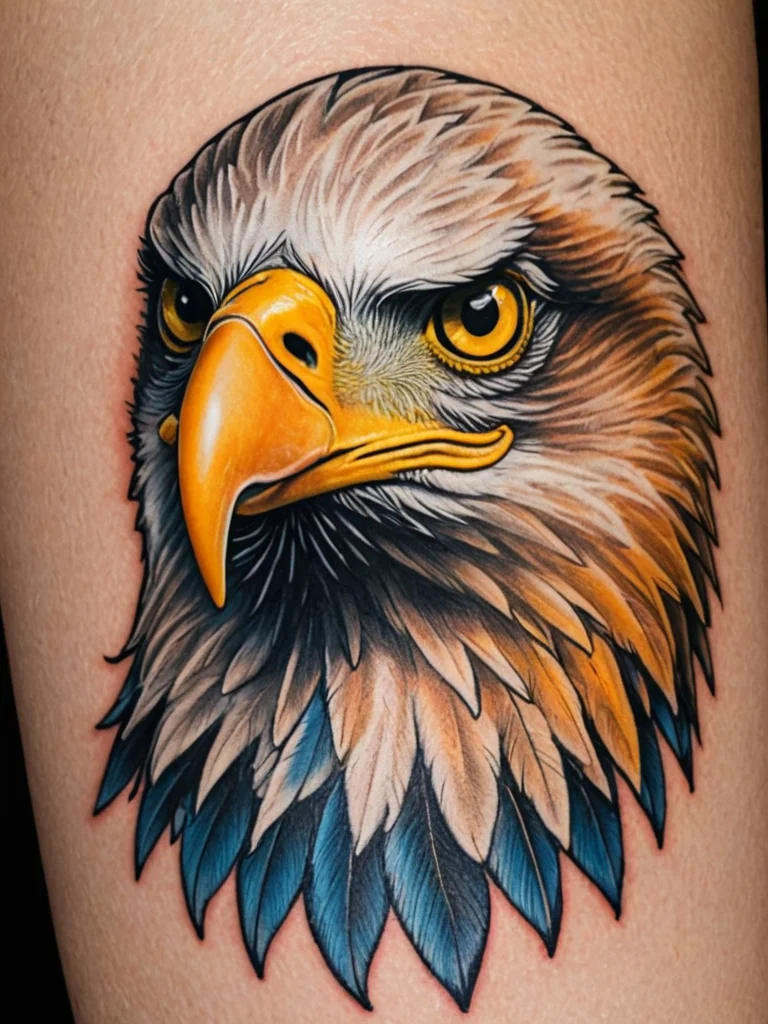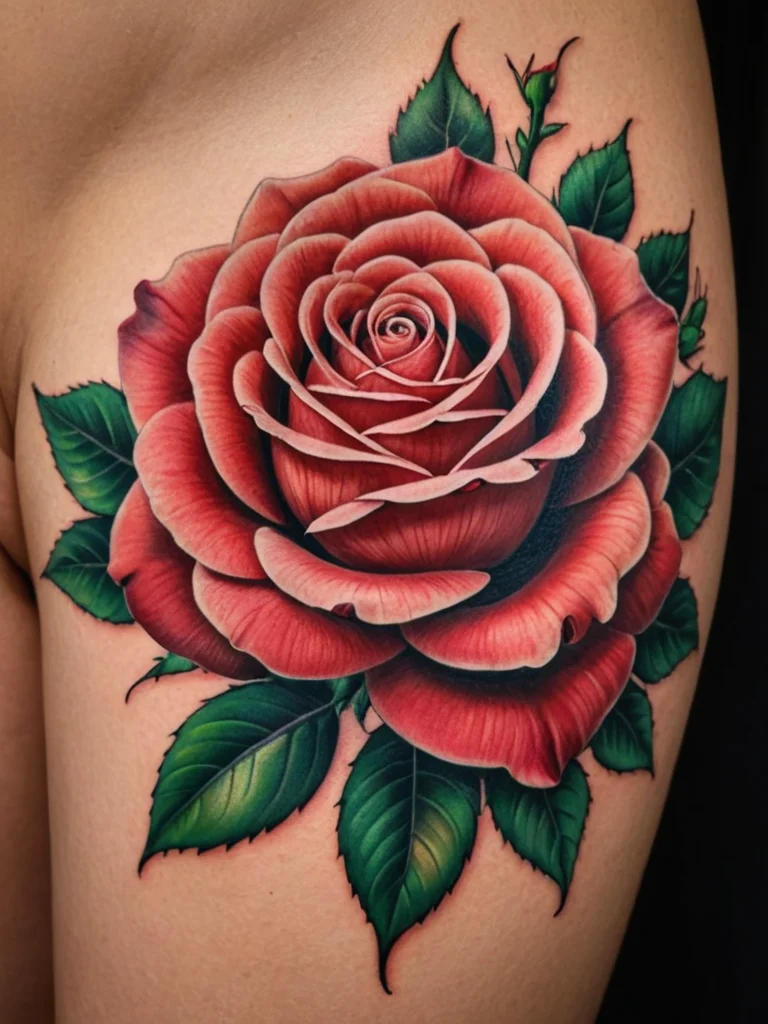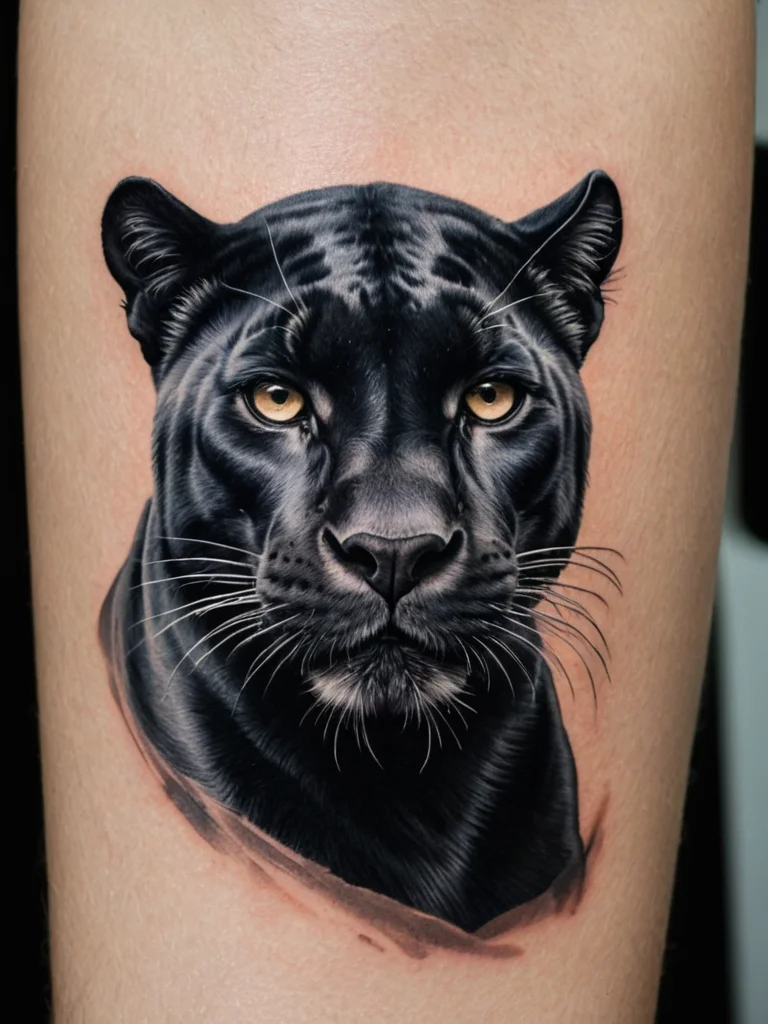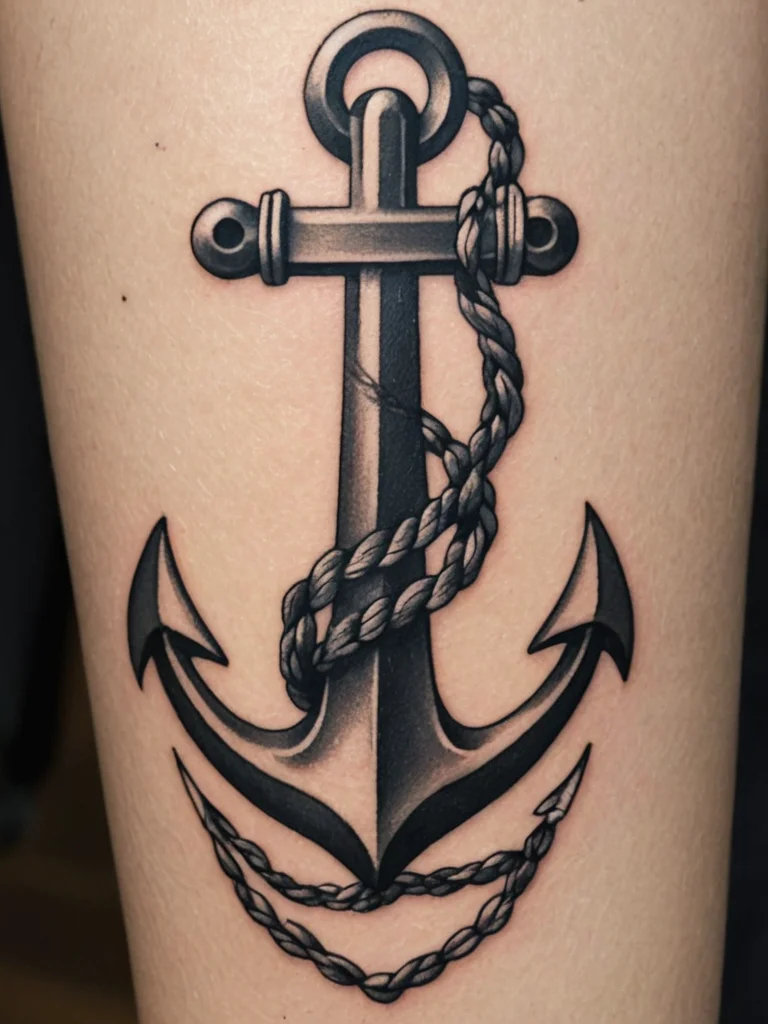American Traditional tattooing, often called Old School or American Classic, is a style that has stood the test of time, remaining incredibly popular and instantly recognizable. Its bold lines, vibrant color palette, and classic imagery evoke a sense of nostalgia and timeless artistry. For anyone considering their first tattoo or looking to add to a collection, understanding the core principles and enduring appeal of American Traditional is essential. This style isn’t just about aesthetics; it’s steeped in history, rebellion, and a unique visual language that has captivated generations.
American traditional tattoo: what it is and why it endures

The essence of American Traditional tattooing lies in its straightforward yet powerful aesthetic. Born from the early days of tattooing in the United States, this style was heavily influenced by the art found on sailors’ tattoos, circus performers, and military personnel. Think of the iconic imagery that graced the skin of sailors returning from voyages or the bold designs that adorned the bodies of carnival attractions. These tattoos needed to be robust, visible, and tell a story quickly and effectively. This demand for durability and impact shaped the very DNA of the style.
What truly defines American Traditional is its adherence to a specific set of visual rules, established and perfected by pioneering artists like Norman “Sailor Jerry” Collins, Don Ed Hardy, and Bert Grimm. These artists laid the groundwork for a style that is both robust and visually striking. The primary hallmarks include thick, black outlines, a limited but highly saturated color palette, and simplified, bold designs that are meant to age well. Unlike more intricate styles that might blur or fade over decades, American Traditional pieces are designed for longevity, often becoming even more characterful as they mature on the skin.
The enduring appeal of American Traditional is multifaceted. For many, it represents a connection to a rich history of tattoo culture, a rebellion against conformity, and an embrace of classic Americana. It’s a style that speaks of adventure, resilience, and a certain rugged individualism. The bold nature of the designs ensures they command attention, making a strong visual statement without being overly complex. This clarity and impact are key to why, even in an era of ever-evolving tattoo trends, American Traditional remains a constant and beloved choice for a wide audience, from seasoned collectors to those taking their very first dive into body art.
Mastering the look: identifying american traditional tattoo elements

To truly appreciate and identify American Traditional tattoos, you need to understand the core elements that constitute this distinctive style. These are not mere suggestions; they are the foundational pillars upon which the entire aesthetic is built. When you look at an authentic American Traditional piece, these characteristics will jump out at you, even if you’re new to the art form.
Bold Outlines: Perhaps the most defining characteristic is the use of thick, consistent black outlines. These lines are the backbone of the tattoo, providing structure and ensuring the design remains legible and impactful over time. Unlike fine-line styles that can easily fade into a blur, these bold outlines hold their own, creating a strong visual boundary for each element within the tattoo. Tattoo artists often use a size 7 to 11 magnum or a thick shader needle to achieve this signature look. These outlines are not just about definition; they contribute to the overall solidity and timelessness of the piece.
Limited Color Palette: American Traditional tattoos employ a specific and intentionally limited range of colors. You’ll typically see vibrant reds, blues, greens, yellows, and black, with minimal use of subtle gradients or shading. The colors are applied in solid, opaque blocks, contributing to the bold, almost graphic quality of the style. These colors are chosen for their saturation and their ability to hold their hue over long periods. Artists often favor specific brands of ink known for their vibrancy and longevity, ensuring that the tattoo retains its original intensity.
Solid Shading: Shading in American Traditional is typically achieved through whip shading or a black and grey wash technique, applied in solid, smooth gradients or dot work patterns. It’s not about hyper-realism or intricate blending; rather, it’s about creating depth and form with a deliberate, artistic hand. The shading is applied to enhance the primary imagery, giving it volume and a sense of three-dimensionality without becoming overly detailed or busy. Artists might use a rounded shader or a liner needle with a lighter touch to achieve these smooth transitions.
Iconic Imagery: The subject matter itself is a key component. American Traditional is renowned for its classic motifs, deeply rooted in maritime culture, military service, and mid-20th-century Americana. These include anchors, ships, eagles, roses, swallows, snakes, daggers, skulls, and pin-up girls. Each motif carries its own historical and symbolic weight, often representing strength, loyalty, freedom, love, or good fortune. The simplicity of the designs allows these meanings to be communicated clearly and powerfully.
Symmetrical and Balanced Compositions: While not always perfectly symmetrical, American Traditional designs often favor balanced compositions. Elements are arranged in a way that creates visual harmony and impact. Whether it’s a single iconic image or a larger piece incorporating multiple motifs, the overall layout is designed to be aesthetically pleasing and to sit well on the body. This balance ensures the tattoo remains a focal point without appearing cluttered or unbalanced.
Key motifs & their meanings in american traditional tattooing

The visual language of American Traditional tattooing is rich with symbolic meaning, with each classic motif carrying a historical context and layered significance. These designs are not arbitrary; they were often chosen for their ability to convey a message, a belief, or an experience in a bold, unambiguous way. Understanding these meanings can add a deeper layer of appreciation to the art form and help you choose a symbol that resonates personally.
Anchors: Historically associated with sailors and maritime life, anchors symbolize stability, steadfastness, and hope. They represent being grounded, secure, and a safe return from voyages, both literal and metaphorical. For many, an anchor tattoo signifies a connection to the sea, a sense of belonging, or overcoming turbulent times.
Eagles: The eagle is a powerful symbol of freedom, strength, and patriotism in American culture. Often depicted with outstretched wings, it embodies courage, vision, and national pride. This motif is a classic choice for those who identify with these qualities or have a connection to military service.
Roses: The rose is a universally recognized symbol of love and beauty. In American Traditional tattoos, it often represents romantic love, passion, and remembrance. The specific color of the rose can sometimes add further nuance – red for deep love, yellow for friendship, and white for purity or innocence. Tattoo artists often render them with strong black outlines and vibrant red or pink petals.
Swallows: With deep roots in sailor lore, swallows were believed to guide ships home and signify a safe return. It was also said that if a sailor died at sea, a swallow would carry his soul to heaven. These tattoos often represent loyalty, fidelity, good luck, and the journey of life, often inked after completing a 5,000-mile voyage.
Snakes: Snakes in American Traditional tattoos can carry a dual symbolism. They can represent transformation, rebirth, and healing, as snakes shed their skin. Conversely, they can also symbolize temptation, danger, or even death, often depicted coiled or striking. The interpretation can depend heavily on the context and how the snake is rendered, sometimes associated with protective spirits or ancient wisdom.
Daggers: Daggers are strong symbols of protection, defense, and often betrayal or vengeance. They can represent the willingness to fight for what one believes in, or a reminder of a past hurt or a battle overcome. The presence of a heart alongside a dagger often signifies heartbreak or deep emotional pain.
Skulls: Skulls are timeless symbols of mortality, representing the inevitability of death. However, they are also seen as a symbol of overcoming death, a reminder to live life to the fullest (memento mori), or a representation of protection against death itself. In the context of American Traditional, they often convey a defiant attitude towards mortality.
Ships: Whether a full sailing ship or a ship’s wheel, these motifs are inextricably linked to maritime adventures, exploration, and the journey of life. They symbolize travel, freedom, and the courage required to navigate unknown waters. A ship sailing away might represent moving on from the past, while one arriving could signify new beginnings.
Pin-up Girls: Popularized by servicemen during wartime, pin-up girls represent idealized beauty, companionship, and a touch of playful sensuality. These often cheerful and alluring figures were seen as symbols of home and morale, bringing a sense of comfort and diversion.
Finding your artist: how to commission authentic american traditional work

Commissioning a tattoo, especially in a style as specific and historically rich as American Traditional, requires finding an artist who truly understands and embodies its principles. Not all tattoo artists specialize in this particular style, and seeking out someone with dedicated experience will ensure you get the authentic look and quality you desire. Here’s how you can navigate the process to find your perfect artist.
Research is Key: Start by exploring tattoo studio portfolios online. Websites, Instagram, and specialized tattoo platforms are invaluable resources. Look for artists whose work consistently displays the hallmarks of American Traditional: bold lines, saturated colors, classic motifs, and clean execution. Pay attention to how their tattoos age in healed photos if available. Many artists will specifically tag their work with #americantraditional, #oldscooltattoo, or similar hashtags.
Portfolio Review: Once you’ve identified potential artists, delve deeper into their portfolios. Do they have a range of American Traditional designs? Can they execute both classic imagery and custom pieces in the style? Look for consistency in their linework, color packing, and shading. A true American Traditional artist will have a cohesive body of work that clearly demonstrates their mastery of the style’s rules.
Consultation: Most reputable artists offer consultations, either in person or via email. This is your opportunity to discuss your ideas, see if your vision aligns with the artist’s style and expertise, and get a feel for their personality. Be prepared to share reference images and describe what you like about the American Traditional style. A good artist will listen carefully, offer professional insights, and guide you through the design process.
Understanding the Process: A professional American Traditional artist will likely draw your design beforehand, allowing you to approve it before the tattooing begins. They will also be able to advise on placement and sizing to ensure the tattoo complements your body and adheres to the style’s principles. They might suggest slight modifications to ensure longevity and aesthetic balance. Trust their expertise; they know what works best for the style.
Booking and Expectations: American Traditional artists are often in high demand. Be prepared for potential waiting lists. When you book, understand the pricing structure, deposit requirements, and cancellation policies. A good artist will be transparent about these details, ensuring a smooth and professional experience from start to finish.
Caring for your classic: maintaining american traditional tattoos

Your new American Traditional tattoo is a piece of enduring art, and like any classic, it requires proper care to maintain its vibrancy and clarity for years to come. While this style is known for its durability, neglecting aftercare can lead to fading, blurring, and a loss of the crisp details that make it so appealing. Following these guidelines will help ensure your tattoo remains a stunning testament to the style.
Initial Healing (First 2-4 Weeks):
- Keep it Clean: Gently wash the tattooed area with a mild, fragrance-free soap and lukewarm water several times a day, as recommended by your artist. Pat it dry with a clean paper towel; avoid rubbing.
- Moisturize: Apply a thin layer of the recommended tattoo aftercare ointment or lotion. Over-application can suffocate the skin, so less is more.
- Avoid Submersion: Do not soak the tattoo in baths, hot tubs, swimming pools, or the ocean, as these can introduce bacteria and interfere with the healing process. Showers are fine.
- Protect from Sun: Keep the tattoo completely covered and out of direct sunlight during the initial healing period. Sun exposure is the enemy of fresh tattoos and can lead to scarring and fading.
- Don’t Pick or Scratch: As the tattoo heals, it will likely itch and may form scabs. Resist the urge to pick, scratch, or peel the skin, as this can pull out ink and cause damage.
Long-Term Care:
- Sunscreen is Essential: Once fully healed, your American Traditional tattoo will need ongoing protection from the sun. Use a high SPF sunscreen (30 or higher) on the tattooed area whenever you are exposed to sunlight. This is the single most important step in preventing fading and keeping your colors bright.
- Stay Hydrated and Healthy: Keeping your skin moisturized and your body healthy contributes to the overall appearance and longevity of your tattoos. Drink plenty of water and maintain a healthy lifestyle.
- Regular Moisturizing: While not as critical as during the initial healing, regularly moisturizing your skin can help keep your tattoos looking their best.
- Avoid Harsh Products: Steer clear of abrasive exfoliants or harsh soaps on the tattooed skin, which can dull the appearance of the ink over time.
By understanding and respecting the core elements of American Traditional tattooing and committing to proper aftercare, you ensure that your classic piece remains a bold, vibrant, and timeless work of art for a lifetime. It’s an investment in a style that has proven its staying power, and with the right care, it will continue to tell its story for decades to come.